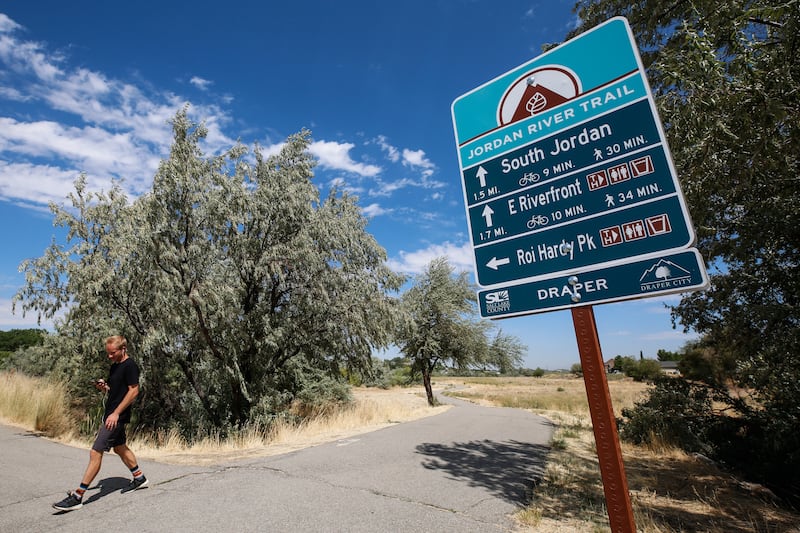SALT LAKE CITY — It was a dumping ground for raw sewage and industrial waste for more than a century and its tendrils touch more than a dozen cities in three Utah counties, making regulation at just the municipal level a scenario as bumpy as a ride down whitewater rapids.
But officials are continuing efforts to chart the best future for the Jordan River — as a recreational asset, a wildlife habitat and as an important source of water along the Wasatch Front — this time through a survey residents can take to have a voice in its destiny.

So far, said Jordan River Commission Director Soren Simonsen, about 3,600 people had taken the survey as of late last week, with a goal of getting to 5,000 by month’s end.
“The more people we have who live along the Jordan River or have an interest, the more stewards we will have who want to improve the river,” he said. The survey, in both English and Spanish, is available at jordanrivercommission.com/vision and will be taking responses through the end of August.
The effort, called Blueprint Jordan River 2020 Refresh, builds on an initiative by Salt Lake County in 2008 and supported by the close to 40 regulatory entities that have a stake in safeguarding and improving the river, including state agencies and conservation partners.
That outreach started more than a decade ago led to the establishment of the Jordan River Commission, which acts as an umbrella organization and a conduit to coordinated planning.
This outreach, spearheaded by Envision Utah, builds on the next steps and is focused on carrying out strategic action to initiate more improvements.
“We are looking at what we have accomplished over the last decade and what we should be focusing our next efforts on,” Simonsen said. “The goal is getting into the strategic elements of this and to determine what partners we need to bring to the table.”
The big challenge is the regulatory labyrinth that goes with oversight of the river and balancing competing interests that include water quality, wildlife habitat, the river’s recreation value, water rights and discharges from wastewater treatment plants that ultimately add to the water’s flow.
“Who is responsible for water quality? That is a big role for the state,” Simonsen said, “but there are also those interests that are executed by every single city that has a storm sewer system connected to the river.”
Simonsen added that there are also 16 to 17 state highways that cross the Jordan River, with gutters and downspouts that affect the river’s health, delivering pollutants, chemicals and sediment to the waterway.
“The good news is there is a lot of momentum,” Simonsen said, adding the Jordan River Parkway Trail was connected in 2017 in a huge undertaking with a fusion that took place from North Temple to 200 South.
The parkway, according to Salt Lake City, is the longest paved urban parkway in the United States, traversing 60 miles and connecting the river at its southern end at Utah Lake to its northern point at the Great Salt Lake.
As big as an accomplishment the trail connection was, Simonsen says much work remains to be done to correct a century of abuse or neglect.
“A lot of what happened over the last century was not very kind to the river, to the wildlife, the habitat and the other natural functions it serves. Righting the ship in a new direction is challenging and correcting those errors of the past is a bigger challenge in so many ways.”
The hope is to create a draft document from the survey and other public engagement and have that ready for fall with additional comment to be incorporated, he said. A final plan is expected next year.


